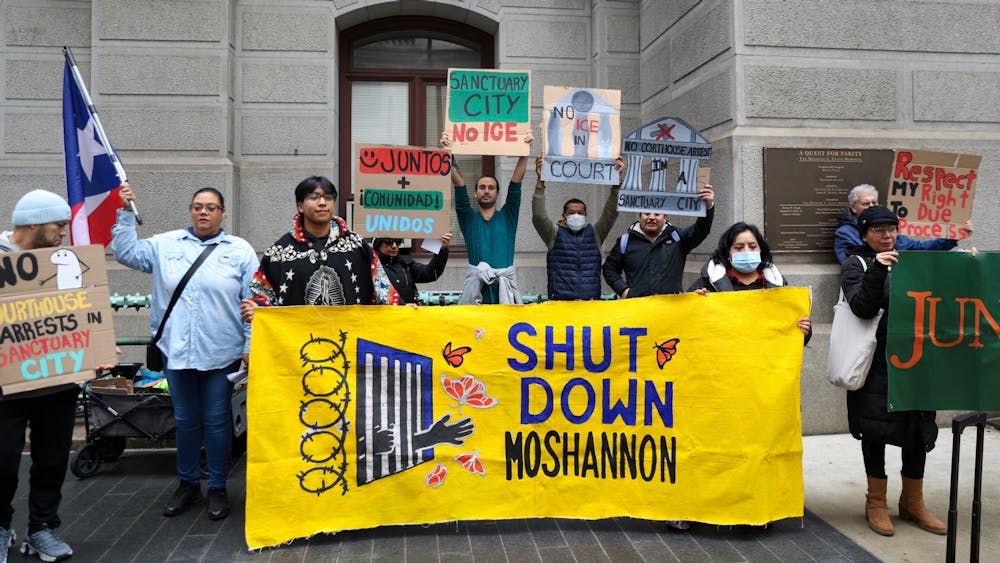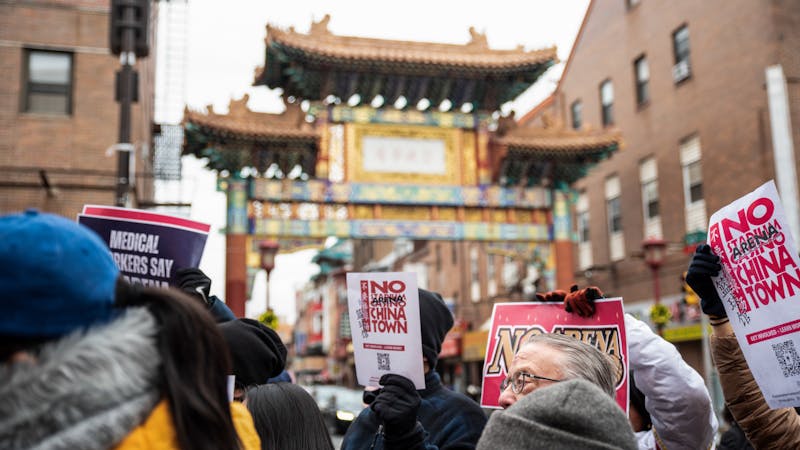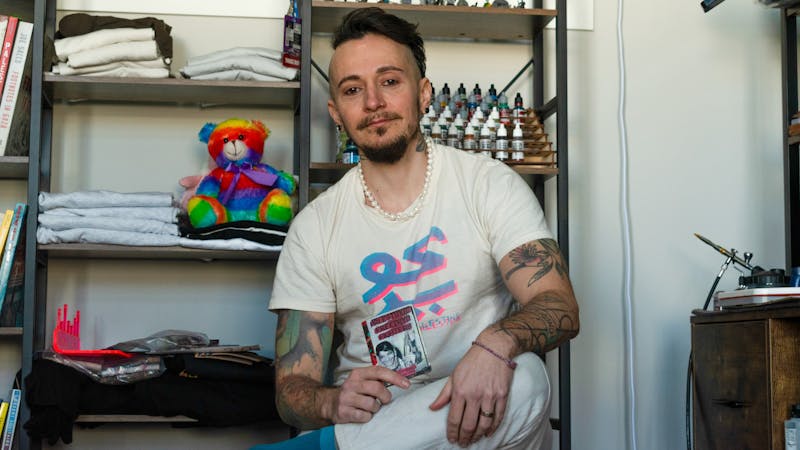On Tuesday, Jan. 28, ICE agents seized seven employees from their workplace, a North Philadelphia car wash. They are currently being held at a detention center in Clearfield County, halfway across the state from their homes and families. One has already been deported, severing him from his young daughter.
In the past few weeks, warnings have circulated on social media. Temple University students stopped at 7–Eleven. Parents warned of immigration–enforcement activity outside their children’s elementary school. ICE agents were sighted near Penn Medicine. Last week, two students at Temple were charged for impersonating ICE officers to question people on their immigration status.
The first weeks of the Trump presidency have seen similar activity across the nation, with agents now allowed to enter formerly sensitive locations like schools, clinics, playgrounds, and places of worship. Sanctuary cities, like Chicago and Philadelphia which in the past refused to cooperate with federal immigration policies, are being targeted in particular. A 2016 order issued by former Philadelphia Mayor Jim Kenney established the city’s refusal to hold individuals in jail for ICE to detain them. While such policies can hinder and slow ICE deportations, they do not prevent them. If the administration’s promises are to be taken seriously, this opening salvo is only the tip of the spear of nationwide expulsions, which threatens a scale and brutality rivaling the Eisenhower administration’s infamous campaign of forcing out Mexican residents through terror.
The Philadelphia community—which has the United State's fifth–largest proportion of residents born outside the US—has swiftly begun to respond. Philly organizations, such as Juntos and the New Sanctuary Movement, have staged protests outside of ICE’s Philadelphia headquarters. But even before Trump returned took office, these organizations had been fighting to dismantle ICE infrastructure in Pennsylvania and ensure that anyone stopped by ICE knows their essential rights—the right to remain silent, the right to a lawyer, and the right to ask to leave.
However, the municipal response has been notably lacking. Though the school district has affirmed the sanctuary status of its schools, Philadelphia Mayor Cherelle Parker has been quiet, despite the pleas of grassroots activists who gathered outside City Hall in December.
In 2016, the University announced the sanctuary status of its campus, barring ICE agents from entering without a warrant. However, the numbingly vague statement circulated to students about upholding "Penn’s values" on Jan. 28 did not include any concrete plans for protecting immigrant and undocu–plus students, nor did it reaffirm Penn's past commitment to sanctuary.
“They mention immigration once but do not guarantee or explicitly support their immigrant community. It was more of an afterthought, to say ‘Okay, now I said something, so you have to shut up,’” a spokesperson from Penn for Immigrant Rights says. “Penn has not even made the effort to give a very basic training to the faculty and security staff about what to do if ICE ends up on campus and wants to enter inside a classroom … Lack of information is incredibly dangerous in those situations.”
Penn's response can be contrasted with its Ivy League counterparts. At Brown University, for example, the Dream Team has worked to inform, protect, and empower undocumented people at Brown, and in the broader Rhode Island since 2023. “Brown has done a great job at supporting undocumented students, and they've done a lot to ensure that undocumented students here at Brown have access to the same resources and everyone else," according to a spokesperson from the Dream Team. "Brown knows that they're leading a lot of the undocumented student institutions here on the East Coast.”
With their Undocumented Student Program and 2016 decision to recognize undocumented and DACA applicants as domestic, Brown offers a model for assisting immigrant or undocu–plus student communities. Though even they still have work to do, other institutions might look to them to create supportive campuses.
Back in Philadelphia, the lifting of restrictions on ICE raids into sensitive locations—originally designated to prevent people from being terrorized out of accessing spaces and services that are essential for day–to–day life—has been subject to opposition from the local faith groups. Most prominent so far has been the lawsuit filed by a coalition of Quaker meetings, together with the non–partisan legal advocacy group Democracy Forward, which argues that the prospect of ICE raids in places of worship amounts to an unconstitutional threat to religious liberty.
“If people are afraid … because of what might happen with ICE, whether for their own self, because of their own immigration status, or because they are afraid of people with guns storming into the worship space … they don't come to worship,” says Christie Duncan–Tessmer, General Secretary of the Philadelphia Yearly Meeting, a local Quaker meeting involved in the lawsuit. In addition to challenging the federal government in the courts, the Meeting is reaching out to other faith groups to collaborate in opposing ICE incursions.
“The primary agenda item is what we can do to create safe space for people who are really affected by the agenda of this administration, particularly considering immigrants and people who identify as LGBTQ+,” says Duncan–Tessmer. As Duncan–Tessmer recognizes, solidarity starts with strong community ties: “I think what everybody can be doing is to watch for where you can accompany people who might be in danger in the current climate … looking for place[s] where you can be in a relationship”.
Juntos outlines a number of steps to take to resist ICE and create a supportive community, such as filming ICE officers (a right under the First Amendment) and reporting any local sightings to them or other organizations like Penn for Immigrants' Rights.
“The rhetoric that’[s] spreading in media about illegality and criminals, I think that is really harmful to the undocumented communities … I think a lot of students don't realize that their friends, their families, their teachers, maybe a business that they frequent have undocumented–plus tie,” says the spokesperson from Brown University’s Dream Team. “At the end of the day, I think undocumented people are the embodiment of America, and if students realize that, I think we start to realize we're all in this together.”
Cities like Philadelphia may soon be the stage for a critical confrontation between communities committed to sanctuary and a federal campaign bent upon tearing them apart. Past efforts at mass deportation have proceeded as much from terror as they have from direct force. If communities like Philadelphia can demonstrate that they will not comply, that they can and will organize to defend their neighbors, then this campaign may falter. Philadelphia's stand could be the nation’s stand.






